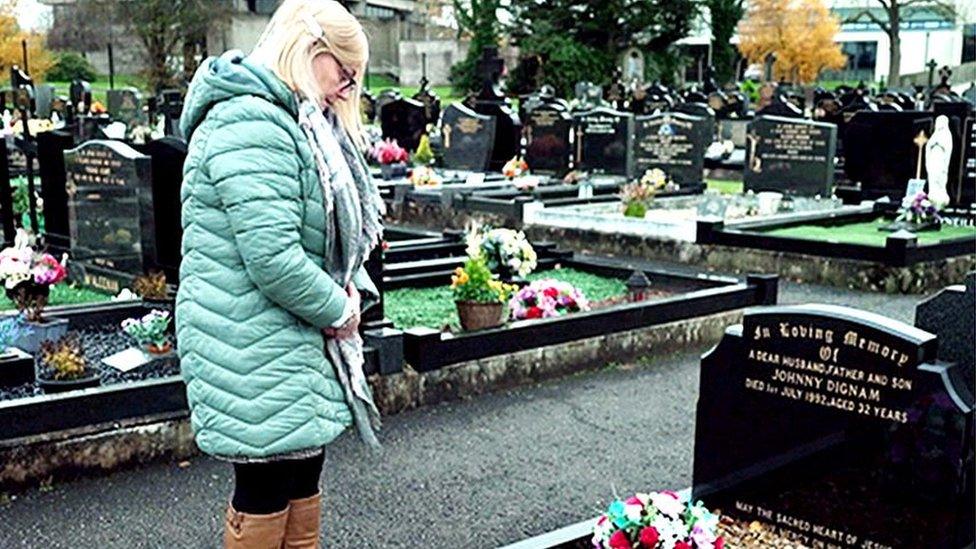Scappaticci: Touts, torture, Thatcher and the hunt for truth
- Published
'This should not have happened'
Double agents, torture, undercover surveillance, grudges, secrecy, murder.
The Operation Kenova report into the Army's top spy in the IRA during the Troubles in Northern Ireland at times felt like the plot of a thriller novel.
But this was no work of fiction - it was the horrific reality during decades of violence, with real people suffering the consequences.
However the report's author, senior police officer Jon Boutcher, points out that the circumstances surrounding the case of that top spy - known as Stakeknife - mean that it has become "encrusted with and obscured by myths and legends".
The report in many areas separated fact from fiction and addressed some of the wild claims that have been circulated about Stakeknife.
At the same time it did not address the biggest fact of all - who Stakeknife was.
Mr Boutcher said he could not make his name public without government approval.
That is despite the fact that it is widely known that he was Belfast bricklayer Freddie Scappaticci.
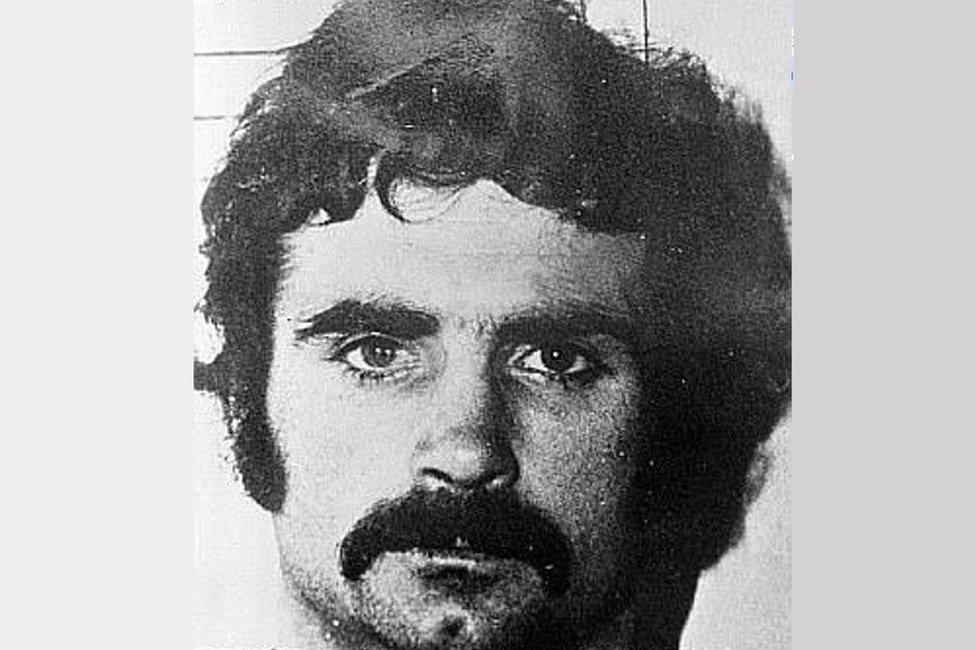
Freddie Scappaticci was the agent known as Stakeknife
The government's failure to name him, the report said had "created a vacuum which has become filled with a great deal of wild and inaccurate conjecture, speculation and nonsense".
But the Kenova report did shine light on many of the murky details of what is sometimes referred to as the "dirty war".
Did Stakeknife meet Margaret Thatcher?
The report identified this as one of the more incredible claims about the activities of the Army's top agent in the IRA.
It has been claimed that Stakeknife met Mrs Thatcher when she was prime minister at her official countryside resident, Chequers.
She was, the claims continue, involved in directing, or received briefings on, his activities.
Mr Boutcher is clear - this is "wild nonsense" and none of it took place.
How were agents recruited and managed?
The report paints a chilling picture of the chaos that engulfed Northern Ireland from the late 1960s on.
In 1971 there were 1,000 IRA bomb attacks and in 1972 - the deadliest year of the Troubles - 472 people were killed.
The police service - the Royal Ulster Constabulary - had 3,000 officers at the start of the Troubles (less than half the size of the modern-day Police Service of Northern Ireland) and was used to policing a relatively peaceful society.
It struggled, the Kenova report says, to deal with the violence and destruction from the late 1960s onwards.
As the security forces battled to contain the IRA's violent campaign they began to recruit members of the IRA as double agents.
These agents, Mr Boutcher says, "were at the heart of a deadly battle between the security forces and the Provisional IRA".
They were recruited precisely because of their involvement in "terrorist activity".
But the report said their recruitment, handling and use were not properly regulated managed or controlled.
The Force Research Unit (FRU) - the agent-handling unit in the Army - had, according to one former head of MI5 spoken to by the Kenova inquiry, an attitude that was "gung ho, not well managed, with little meaningful oversight".
FRU members operated in plain clothes and unmarked vehicles and used "front companies" such as a mobile laundry service and a massage parlour to gather evidence.
Debriefings with agents were recorded - but the Kenova team did not recover any recordings and were told that none exist.
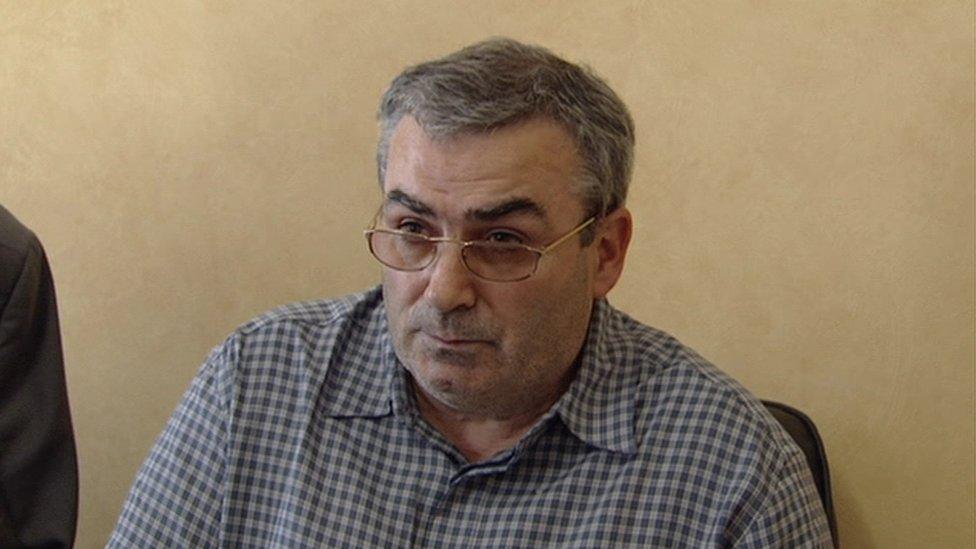
Mr Scappaticci left Northern Ireland when identified by the media as Stakeknife in 2003
The report found the security forces failed to prevent some murders to try to protect their agents in the IRA.
In one case an agent who left the IRA and was resettled went on to help the security forces by giving lectures to new agent handlers and other security force personnel.
In these lectures, they admitted serious criminal offences. The crimes were never dealt with by the criminal justice system.
The lack of guidelines around handling agents - the report said - "allowed an environment to evolve in which people were tortured or killed without efforts being made to protect them or to bring agents responsible for serious crimes to justice".
Handling agents, according to the report, had a maverick culture "where agent handling was sometimes seen as a high-stakes 'dark art' practised 'off the books'".
Mr Boutcher said being an agent handler might sound glamorous - and he recognised the bravery of many involved - but said it was "inherently unsafe" and the rules - when there were any - were formulated by those on the ground with no regard to the European Convention on Human Rights or the rule of law.
What did we learn about the 'nutting squad'?
In an attempt to root out "informers" or "touts" within its ranks, the IRA set up what it referred to as the "Internal Security Unit" or ISU.
It was commonly known as the "nutting squad" because it shot its victims in the head.
Stakeknife was a member of this unit.
The report said some people "investigated" by the ISU were not agents but instead were preyed upon because of reasons such as IRA hierarchical disputes and, in some cases, to eliminate partners for those involved in extra-marital affairs.
The unit forced confessions out of those it tortured - confessions that the report said should be disregarded.
In some cases it made false promises to victims that if they confessed they would stop being tortured.
"Typically the IRA did not usually live up to its undertakings and executed many of those who made admissions in a vain attempt to stay alive," the report stated.
Senior IRA leaders who set up the ISU, the report noted, "would later be active in seeking fairness and human rights protections".
Anybody arrested and later released by the RUC could be suspected of being an informer.
In summing the ISU up, the Kenova Report states: "The sickening crimes committed by the ISU against those accused or suspected of being agents represented the worst of what one human being will do to another."
'Hundreds of lives saved' claim
One of the key claims the report rejected was that Stakeknife's actions had saved hundreds of lives.
It said instead it was more likely between high single figures and low double figures.
But how did the larger figure come about in the first place?
Mr Boutcher sad it was due to "unreliable and speculative internal metrics".
For example, if a piece of intelligence led to a bomb being discovered, the FRU would estimate the number of people it would have killed and add this to the tally of "lives saved" by its agents.
Did security forces save Stakeknife from loyalists?
No, said the report.
There is a theory known as the "name swap theory" which suggests the security forces directed loyalist paramilitaries to target someone other than Stakeknife.
The report was definitive - this did not happen.
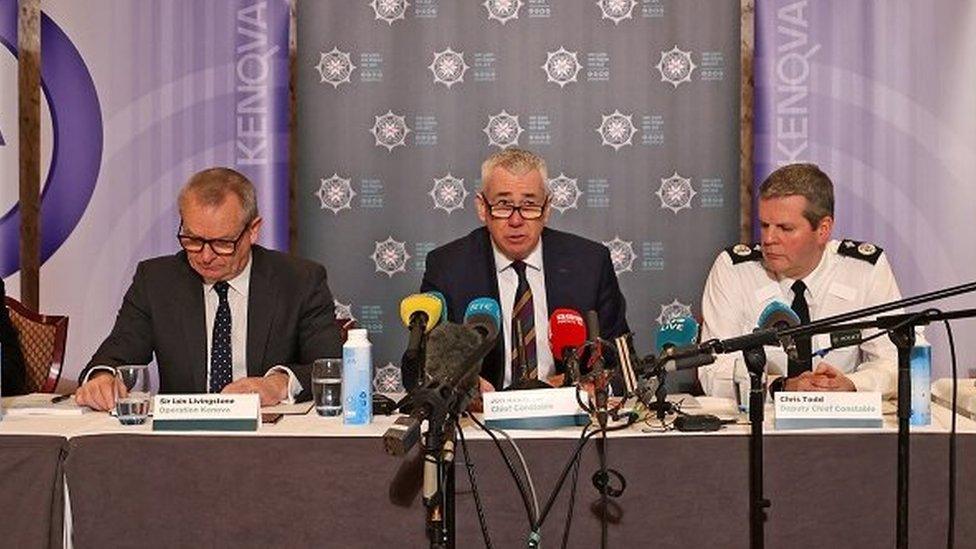
Sir Iain Livingstone, the officer in charge of Operation Kenova, PSNI Chief Constable Jon Boutcher, who previously led the investigation, and PSNI temporary Deputy Chief Constable Chris Todd at a press conference in Belfast on Friday
Insiders 'saw Stakeknife through rose-tinted spectacles'
Mr Boutcher's report said a cautionary lesson could be drawn from the misinformation around Stakeknife.
He said he understood that the concept of an agent being someone who "was themselves responsible for the identification of agents" was "inherently satisfying and attractive because it is so rich in irony, symmetry and poetic justice".
But, he warned, it was this which contributed to Stakeknife being "so obscured by myths and legends" that he was not managed properly.
He was seen as so valuable - and allegedly responsible for saving so many lives - that some "on the inside" of the security forces viewed him "through rose-tinted spectacles".
His reputation as "the goose that laid the golden eggs" the report concludes, should have raised alarm bells because the comparison was "rooted in fables and fairy tales".
And there's more on Stakeknife in The Big Cases 'The Executioner Next Door' on BBC iPlayer.
Related topics
- Published8 March 2024
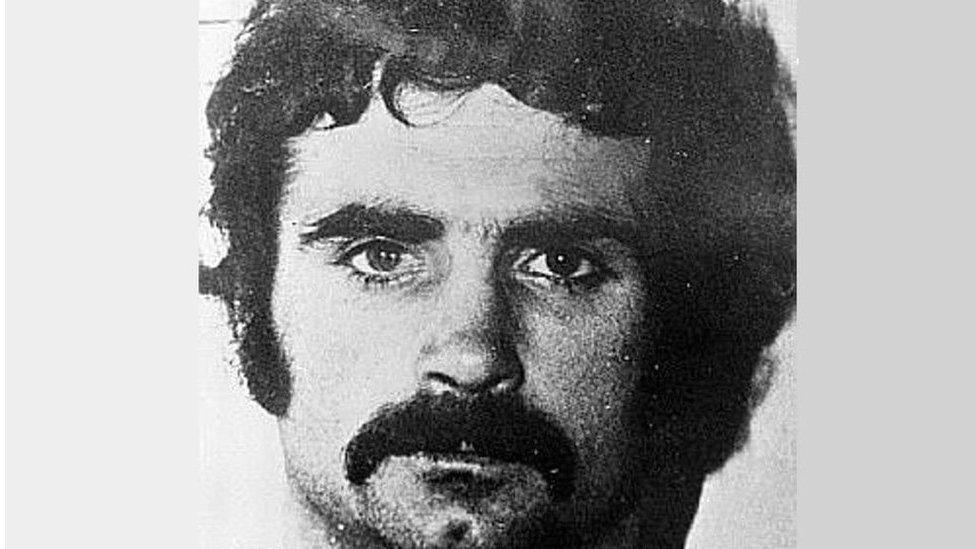
- Published8 March 2024

- Published7 March 2024
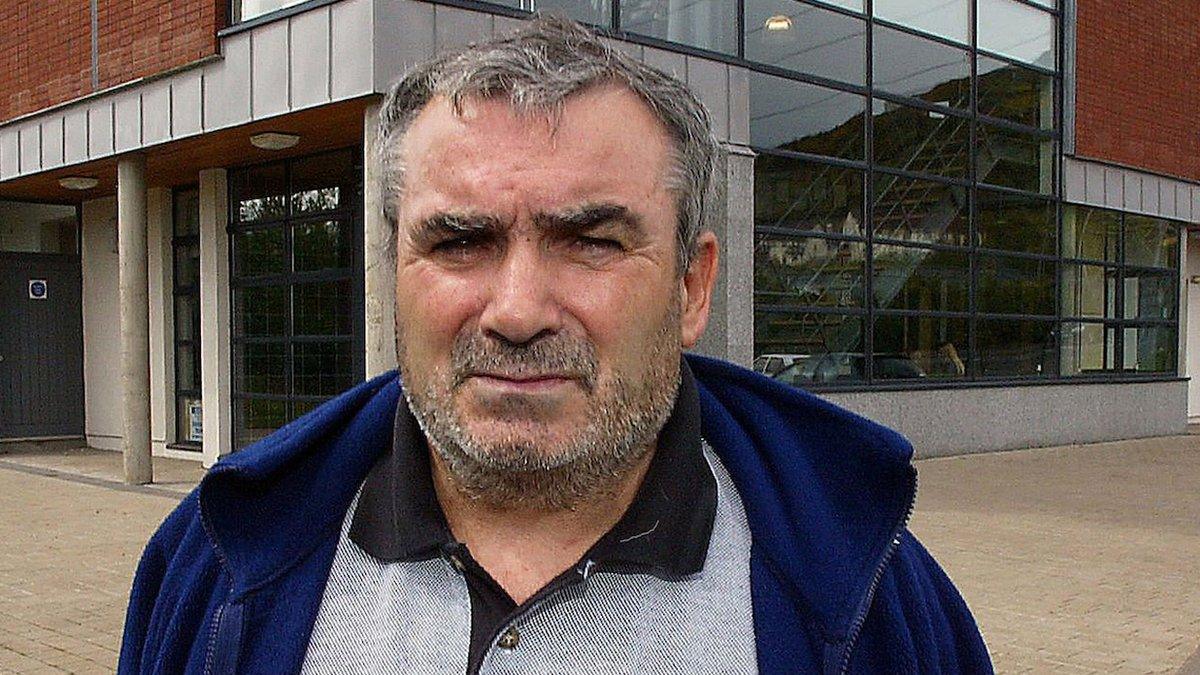
- Published8 March 2024

- Published8 March 2024
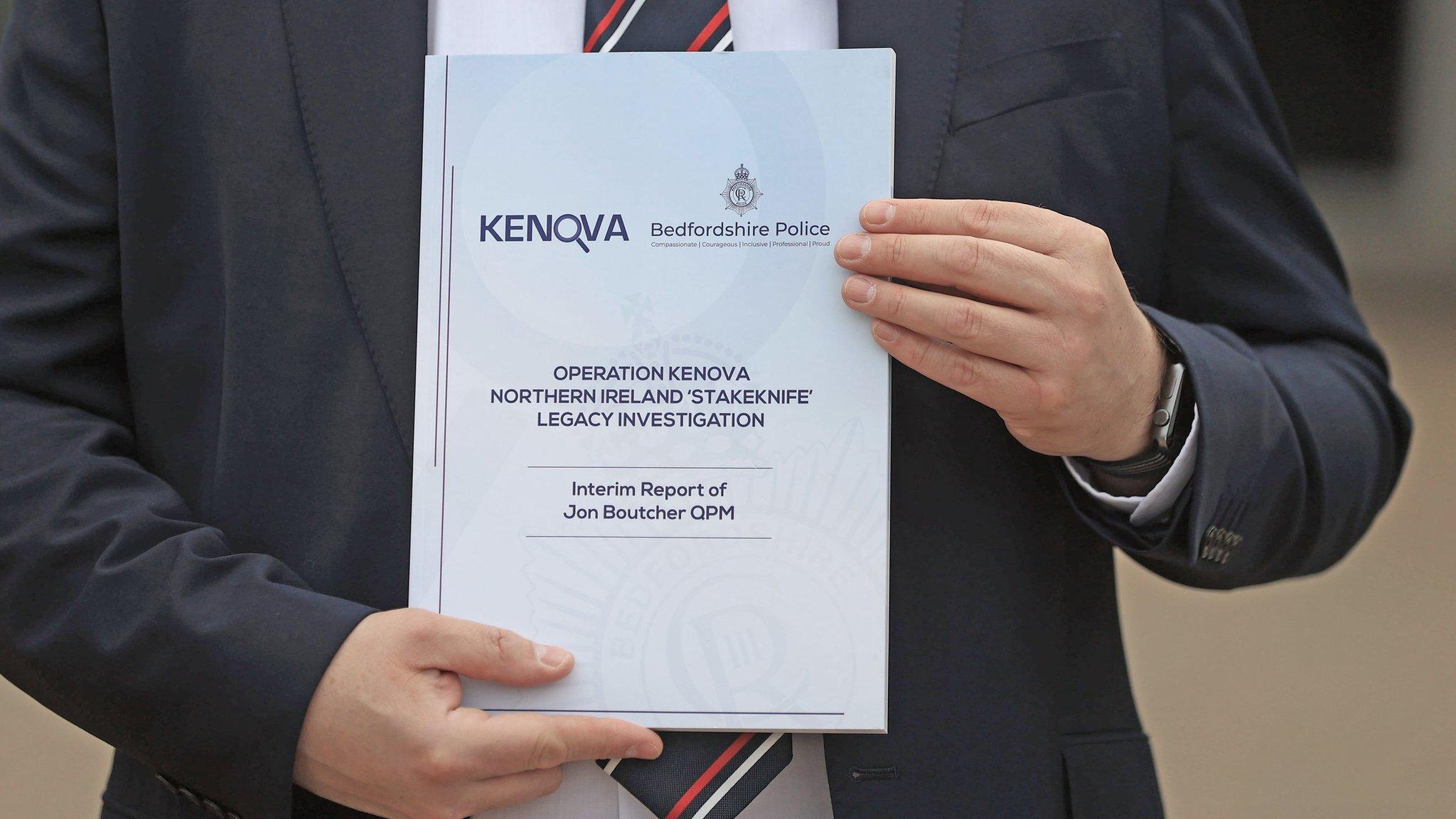
- Published5 March 2024
